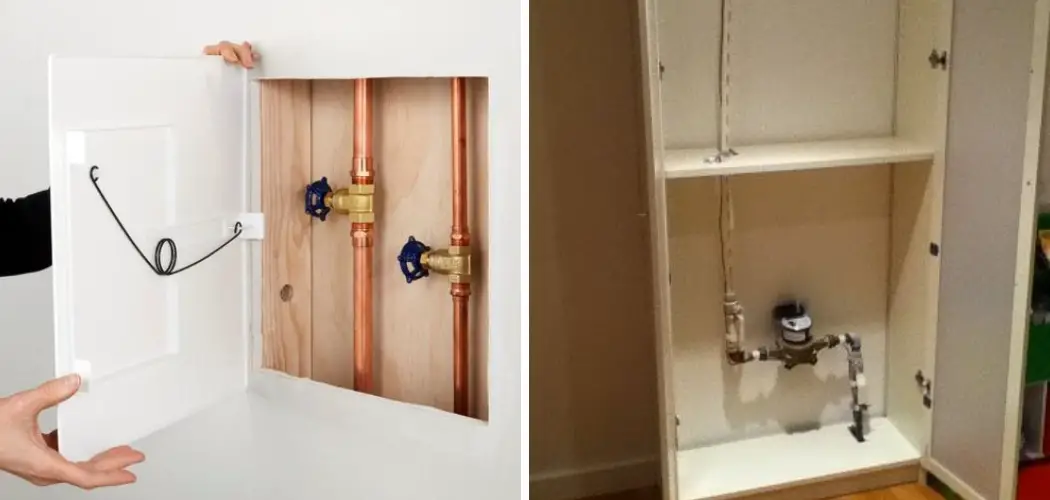Most homes have a water shut-off valve located somewhere in the basement, but sometimes it can be an eyesore and present a hazard if improperly placed. If you have a problem with water shut-off valves in your basement, then this blog post is for you! Hiding the water shut-off valve is an important task that every homeowner should know how to do – it helps keep the look and feel of your home safe and organized.
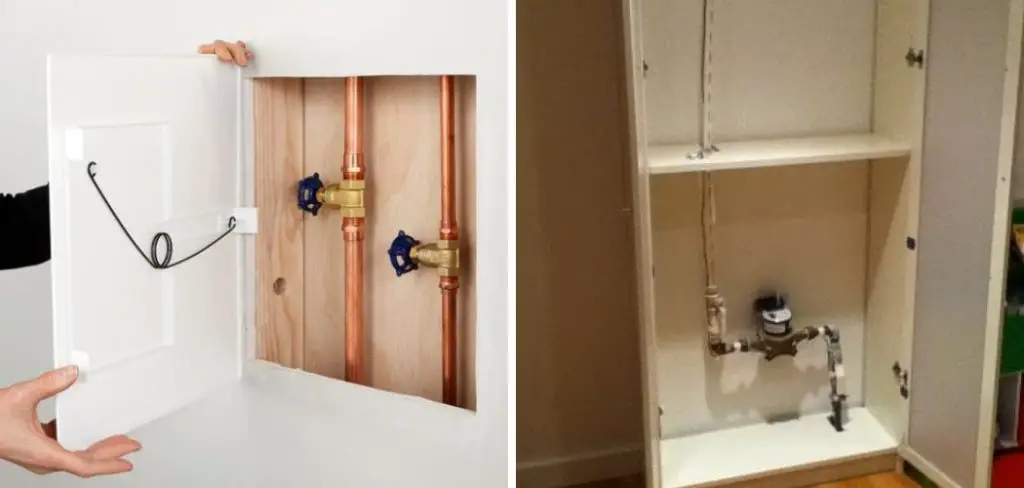
This guide will provide step-by-step instructions on how to hide water shut off valve in basement, as well as tips and tricks for creating an attractive yet secure space. With these steps, you’ll be able to transform your otherwise dull and uncomfortable basement into a cozy haven without sacrificing security or convenience. Continue reading, and you’ll explore several clever solutions that will help keep your basement looking neat while also providing easy access whenever needed.
What is a Water Shut Off Valve?
A water shut off valve is a simple device that helps to regulate the flow of water. It is typically located in the basement and can be used to shut off the main water supply in case of an emergency or leak. The valve itself looks like a large wheel or knob, and it must be turned clockwise until it’s completely closed for proper operation. Depending on your home
Preparing to Hide the Shut-Off Valve
Before you begin hiding the water shut-off valve, it’s important to make sure that everything is properly prepared. First, locate your existing shut-off valve and take note of its position and size. Then, measure the area around it so that you can determine the best way to hide it. Once you have measured the
Hiding the Shut-Off Valve
Now that you have all the necessary measurements and tools, it’s time to begin hiding the water shut-off valve. Depending on what type of home you own, there are several different options for hiding the valve, such as covering it with a piece of furniture or constructing a false wall around it. Let’s take a look at some of the most popular methods.
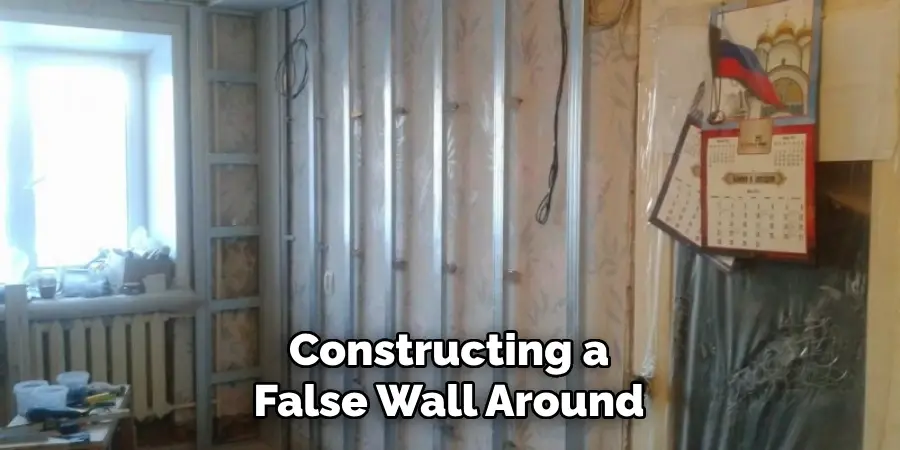
Required Items
- Drywall
- Wall Studs
- Nails or Screws
- Hammer or Drill
- Saw
How to Hide Water Shut Off Valve in Basement in 10 Steps
Step 1: Construct a False Wall
This is one of the most effective methods for hiding the valve. To do this, you’ll need to build a wall frame using drywall and studs. You’ll also need to cut the drywall pieces to fit around the valve, and then attach them firmly using nails or screws. Make sure that your wall is securely attached to the floor and ceiling so that there is no risk of it coming down later on.
Step 2: Hang Wall Art
This is a great way to hide the water shut-off valve while also adding a decorative touch to your basement. To hang wall art, you’ll need to use nails or screws and make sure that they are securely attached. You can also cover the valve with a piece of furniture such as a table or bench, for added security.
Step 3: Install Cabinets
Installing cabinets is another great way to hide the shutoff valve in the basement. Cabinets are a great way to keep all of the items in your basement organized and neat, while also concealing them from view. When installing cabinets, make sure that you measure the space correctly and use appropriate screws and hardware so that it is securely attached.
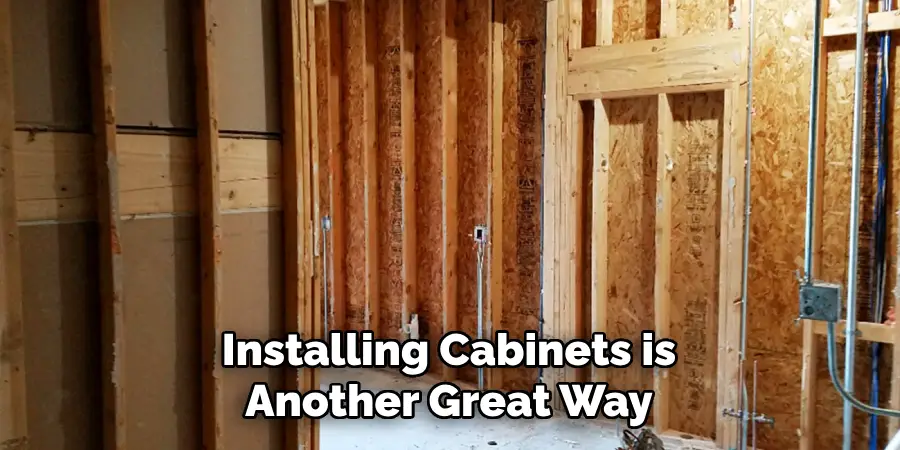
Step 4: Paint the Wall
Painting your wall can be an effective way to hide the water shut-off valve. Choose a color that will match the rest of your basement and use quality paint to ensure that it lasts for years to come. If you’d like some extra protection, consider using waterproof paint so that your wall won’t be affected by any potential leaks.
Step 5: Cover the Valve with Carpet
This is one of the easiest ways to hide the water shut-off valve in the basement. Use heavy-duty carpet that is designed for use in basements, and make sure that you secure it firmly with nails or staples. This will help to keep your basement looking neat while also providing additional protection against any potential leaks.
Step 6: Cover with a Rug
This is another great option for hiding the water shut-off valve in the basement. Use a large rug that is designed for use in basements, and make sure that it covers the entire area around the valve. This will help to disguise the valve while also adding an attractive touch to your basement.
Step 7: Place Furniture over it
If you’d like a more creative solution, you can use furniture to hide the valve. Place a large piece of furniture, such as a desk or table, directly over the valve, and then make sure that it is securely attached so that there is no risk of it shifting out of place later on. This will help to keep your basement organized while also providing additional protection against any potential leaks.
Step 8: Install Lighting
If you’d like to add a bit of ambiance while also hiding the shut-off valve, then consider installing some lighting. This will help to brighten up your basement and make it more inviting while also providing an effective way to conceal the valve from view.
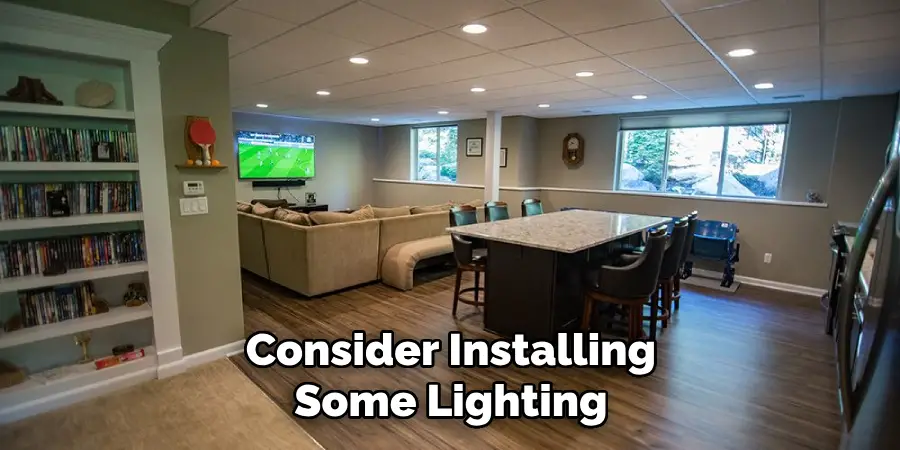
Step 9: Add Some Greenery
Adding greenery is a great way to liven up your basement while also hiding the water shut-off valve. You can use potted plants or hanging vines to add a bit of color and life to the area around the shut-off valve. This will help to create an inviting atmosphere while also providing an effective way to hide the valve from view.
Step 10: Replace With a New Valve
If you need to replace your existing shut-off valve, you can opt for a new model that is designed to be more discreet. There are several models available on the market today that are designed to blend in with the surrounding area and provide easy access whenever needed.
Following these steps will help you to hide the water shut-off valve in the basement without compromising on your home’s aesthetic. With these solutions, you can ensure that your basement looks neat and inviting while also providing easy access when it’s needed.
8 Safety Measurements to Follow
- Make sure that the shut-off valve is accessible in case of an emergency. Making sure that it is easy to access will help you to quickly shut off the water should something go wrong.
- Check for any signs of leaking around the valve before hiding it. If there are any leaks, you’ll want to take care of them immediately, as they can cause major damage if left unchecked.
- Make sure that the valve is securely attached to the wall so that it doesn’t shift out of place. This will help to prevent any potential accidents or leaks.
- When building a false wall, make sure that you use appropriate screws and nails so that everything remains secure.
- When hanging wall art, make sure that the nails or screws you use are strong enough to hold the weight of the artwork.
- When installing cabinets, make sure that all of the screws and hardware are properly secured so that there is no risk of them coming loose later on.
- Make sure that any paint you use is waterproof in case of any potential leaks.
- Make sure that any rugs or carpets you use are heavy-duty and securely attached so that they don’t slip out of place.
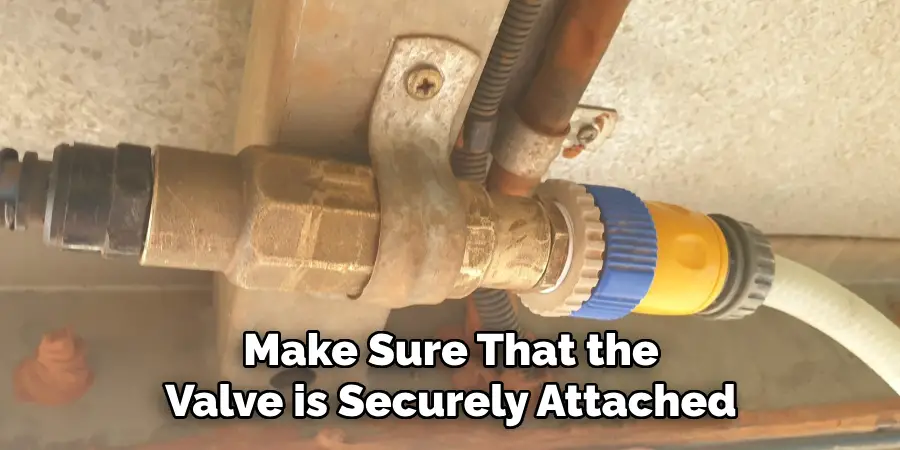
By following these safety measurements, you can hide the water shut-off valve in the basement while also ensuring your safety and the safety of those around you. Taking the necessary precautions will help to protect your home against potential damage and ensure that everything remains secure.
Conclusion
All in all, knowing how to hide a water shut off valve in your basement is an important part of preventing flooding and damage to your home. Being able to effectively place the valve out of sight while still keeping it accessible is an incredibly useful skill and can help save you time, money, and worry should an emergency arise. For those who may have hidden it too well, be sure to make a note of where it is located so that in times of need, you can find it quickly.
And if you don’t have access to your shut-off valve or are unable to locate the control center, be sure to call a professional plumbing service for assistance. With just a few simple steps and some basic knowledge on how to hide water shut off valve in basement, hiding your water shut-off valve doesn’t need to be a daunting task – instead, it could prove invaluable for protecting your home from potential disasters down the road.

